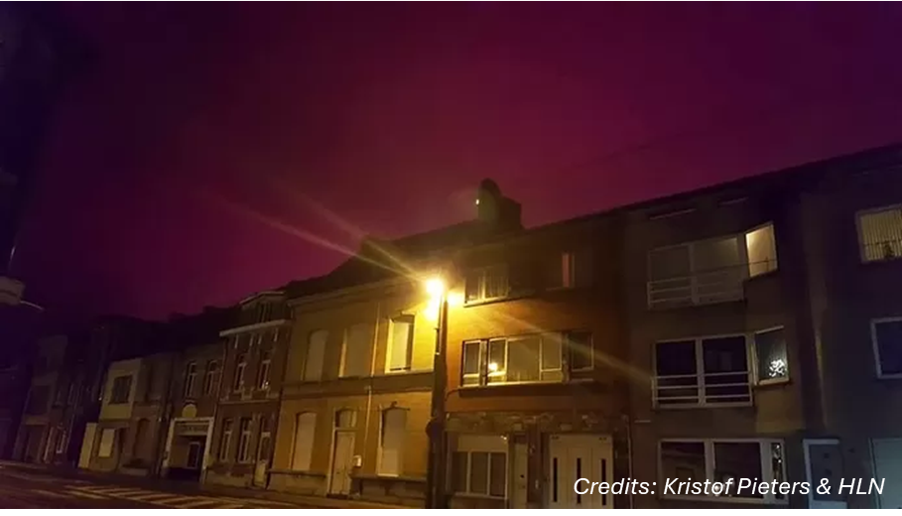When people think of colourful phenomena in the night sky, the polar lights are the first that come to mind. They are the result from interaction between the solar wind and the Earth's magnetic field. Particles get accelerated from the Earth's magnetotail to the Earth and collide with particles in the Earth's upper atmosphere, which results usually in green and red colours corresponding with altitudes of respectively 100-200 and 200-400 km. Aurora are quite dynamic and often compared to waving curtains. They occur in an oval a few 100 km wide and centered 10 to 20 degrees around the magnetic pole. During strong storms, the oval may expand and move more to the equator. Then, polar lights may become visible from mid- and low-latitudes, with red colours first as they are the highest and thus can be seen the furthest away.
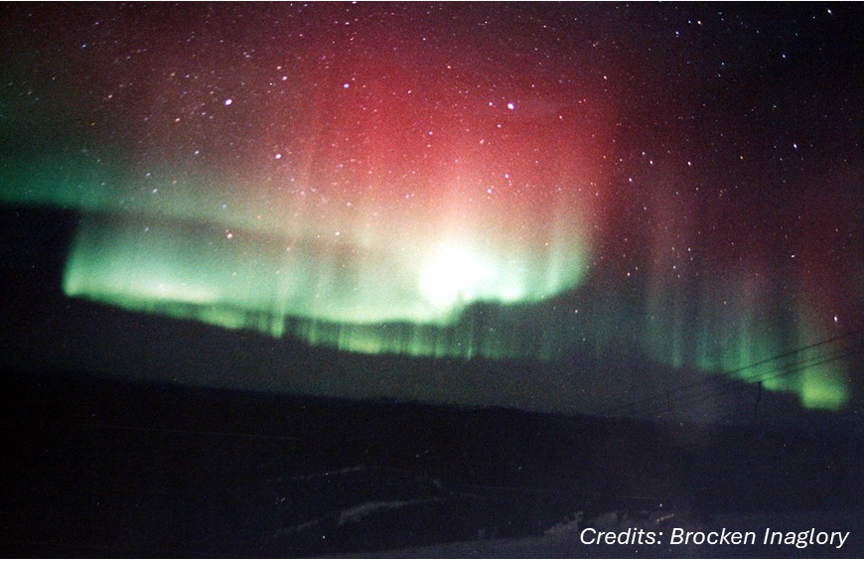
But not all coloured phenomena in the night sky are polar lights. STEVE, short for "Strong Thermal Emission Velocity Enhancement", is an optical phenomenon in the Earth's upper atmosphere that usually appears as a narrow purple light ribbon, sometimes accompanied by smudges of green lines called "picket fences" owing to their appearance. Known already for many decades, it was named in late 2016 by aurora watchers (citizen scientists) from Alberta, Canada. According to analysis of satellite data from the European Space Agency's Swarm mission (ESA), the phenomenon is caused by a long, 20-30 km wide ribbon of fast flowing, hot plasma (charged particles) at an altitude of 130-270 km, with a temperature of 3000 degrees (Archer et al. 2019). Studies have shown that it is not related to particle precipitation, and is most likely ionospheric in origin (Gallardo-Lacourt 2018). This makes its formation mechanism quite different from that of aurora. STEVE phenomena may be spotted further from the poles than the aurora, and show a preference to occur around the times of equinoxes (Patel, 2023). The image underneath show STEVE's general outlook (on the left) and position with respect to the typical aurora (to the right).
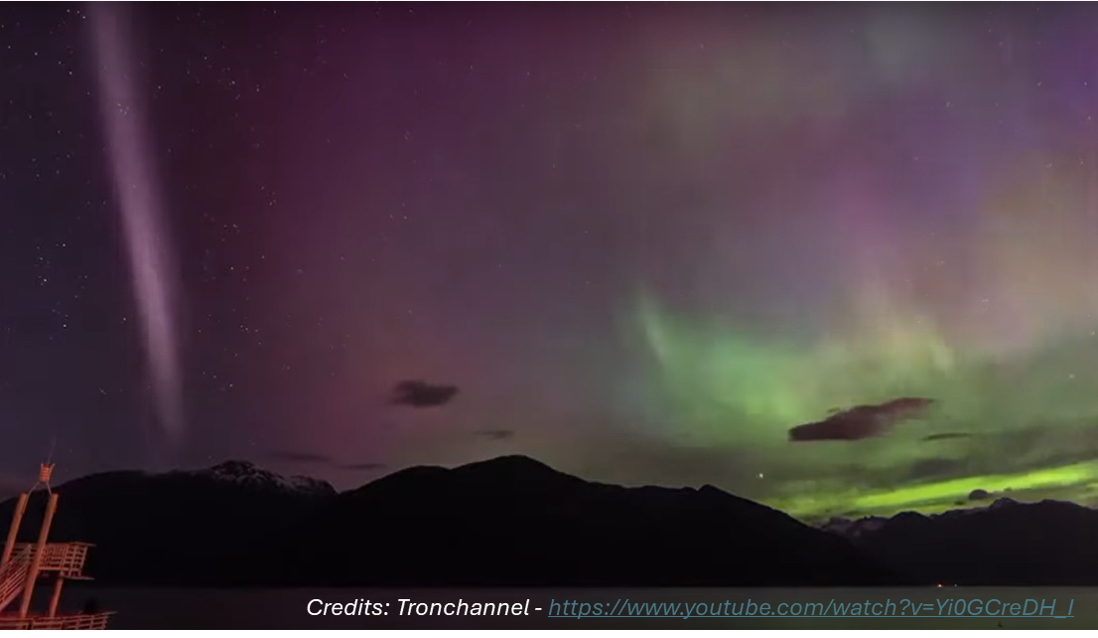
Another aurora lookalike are the Stable Auroral Red arcs (SARs) which were observed for the first time in the 1950s. Not knowing what they were, they were initially thought to be linked to aurora and named after them, but that was premature. SARs are pure red arcs of light that ripple across the sky during strong geomagnetic storms. They are a sign of heat energy leaking into the upper atmosphere from Earth's ring current system (SWIC space weather course). SAR arcs occur during geomagnetic storms when the inner edge of the ring current interacts with a contracted plasmasphere. A portion of ring current energy is dissipated as heat that gets conducted along geomagnetic field lines into the topside ionosphere. If ambient ionospheric electrons at about 400 km get heated to temperatures near 3000 degrees, collisions with thermospheric oxygen atoms can transfer the necessary energy to make them emit the familiar red colour (Mendillo et al. 2015). SARs can also be observed at low latitudes, such as e.g. in November 2021 when a SAR was photographed as far south as Texas, USA (Spaceweatherarchive). If you perceive some similarities with STEVE, then you may be just right. A recent paper used images made by citizen scientists during the St-Patrick Day's geomagnetic storm (17 March 2015) to show for the first time the evolution of a SAR arc into a STEVE ribbon (Martinis et al. 2022 ; EOS). A portion of this event is shown underneath, with the SAR arc (on the left) transforming into a STEVE ribbon (on the right) in just half an hour. The typical aurora are in the bottom half of each image.
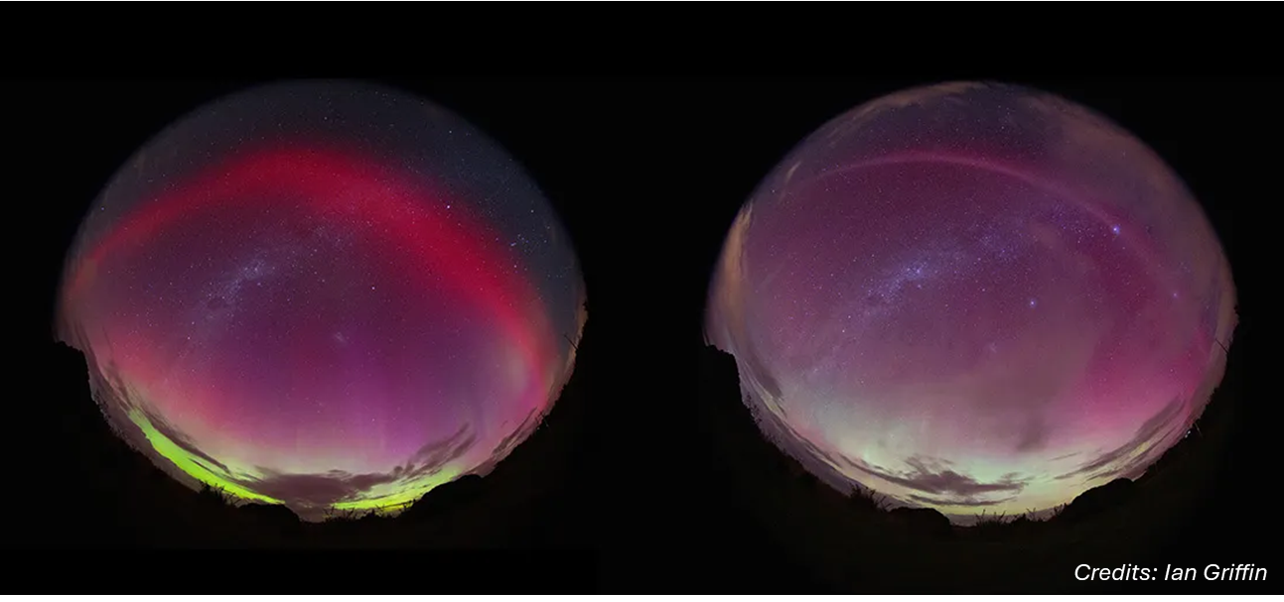
There are other ways in which the Earth's atmosphere may light up. In fact, our atmosphere glows constantly during both day and night as sunlight interacts with atoms and molecules within the atmosphere, a phenomenon commonly called "airglow". Most of the airglow emanates from the region about 50 to 300 km above the surface of Earth, with the brightest area concentrated at altitudes around 100 km. Unlike the aurora, airglow does not exhibit structures such as arcs and is emitted from the entire sky at all latitudes at all times. Nightglow results from the recombination of molecules that have been broken apart by solar radiation during the day. The light is emitted when the excited atoms or molecules return to their original unexcited state during the night. One of the brightest emissions on Earth stems from night glow, more particularly from excited oxygen atoms radiating light at a particular wavelength of light (557.7 nm), a green radiation emitted in the spectral region where our eyes are most sensitive. The green layer of nightglow is quite faint to the naked eye, so that it can only be seen at night by looking "edge on" at the emission layer, such as astronauts can view it in orbit (BIRA-IASB ; Britannica). Studies have confirmed a link with the solar cycle, with airglow up to 40% brighter when the Sun is most active. An amazingly bright airglow was observed over Colorado (USA) on 22 June 2023 (image underneath ; Spaceweatherarchive).
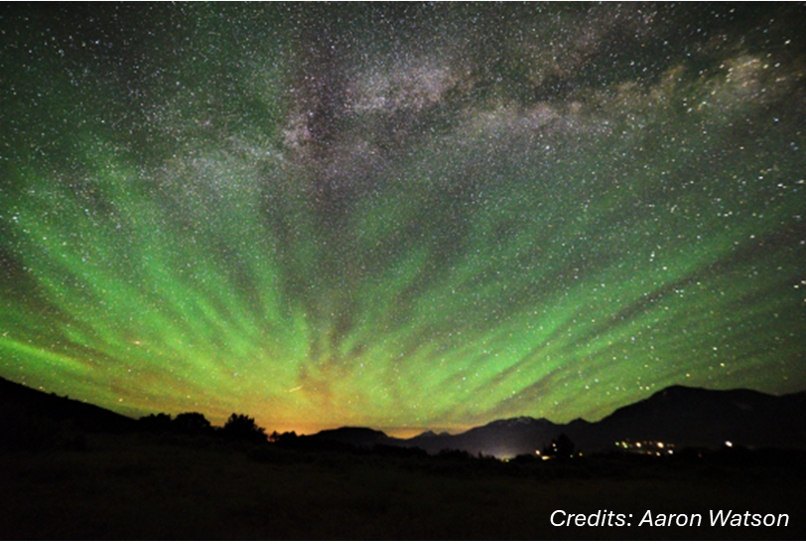
Nacreous clouds, also called polar stratospheric clouds or mother-of-pearl clouds, are clouds in the stratosphere at altitudes of 15 to 25 km. They are best observed during civil twilight, when the Sun is just a few degrees below the horizon, as well as in winter and in more northerly latitudes. Ice polar stratospheric clouds (nacreous clouds) form at temperatures below the ice frost point, typically near -85 degrees Celsius, which is colder than the average lower stratosphere temperature. The characteristic bright iridescent colours, resulting from diffraction and interference of light waves, suggest that the clouds are composed of similarly sized spherical crystals of about 10 μm in diameter. They are most common in Antarctica, but have also been observed in the Arctic, Scotland, Scandinavia, Alaska, Canada and the northern Russian Federation (Cloudatlas).
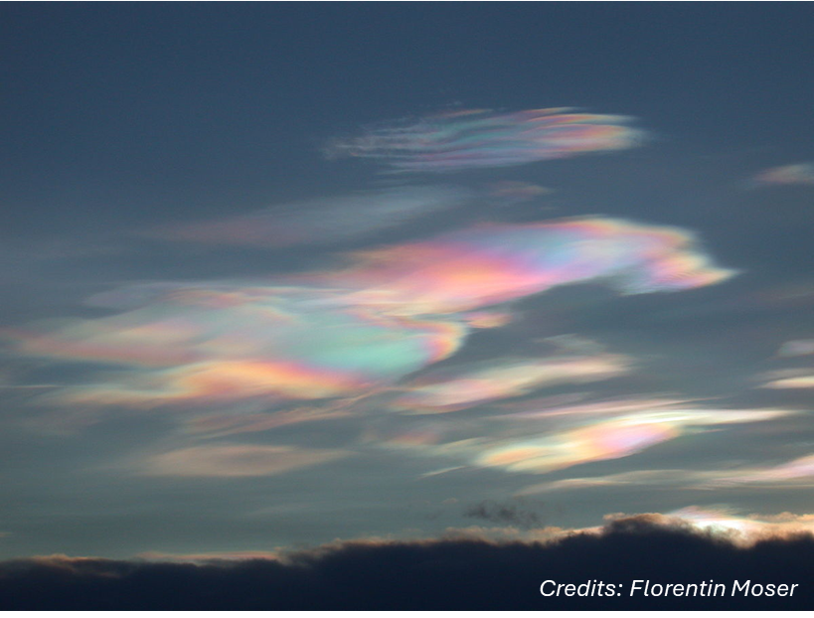
A light pillar is an atmospheric optical phenomenon in which a vertical beam of light appears to extend above and/or below a light source. The effect is created by the reflection of light from tiny ice crystals that are suspended in the atmosphere or that comprise high-altitude clouds (e.g. cirrostratus or cirrus clouds ; 2-6 km). Unlike a light beam, a light pillar is not physically located above or below the light source. Its appearance as a vertical line is an optical illusion, resulting from the collective reflection off the ice crystals. Since they are caused by the interaction of light with ice crystals, light pillars belong to the family of halos. The crystals responsible for light pillars usually consist of flat, hexagonal plates, which tend to orient themselves more or less horizontally as they fall through the air. Each flake acts as a tiny mirror which reflects light sources that are appropriately positioned below it, and the presence of flakes at a spread of altitudes causes the reflection to be elongated vertically into a column. The larger and more numerous the crystals, the more pronounced this effect becomes (Wikipedia). The image below shows a series of light pillars over Laramie, Wyoming (USA) on 20 April 2013 (Powhusku), creating the impression of curtain-like aurora. More images are at Atmospheric Optics (old site) and e.g. APOD.
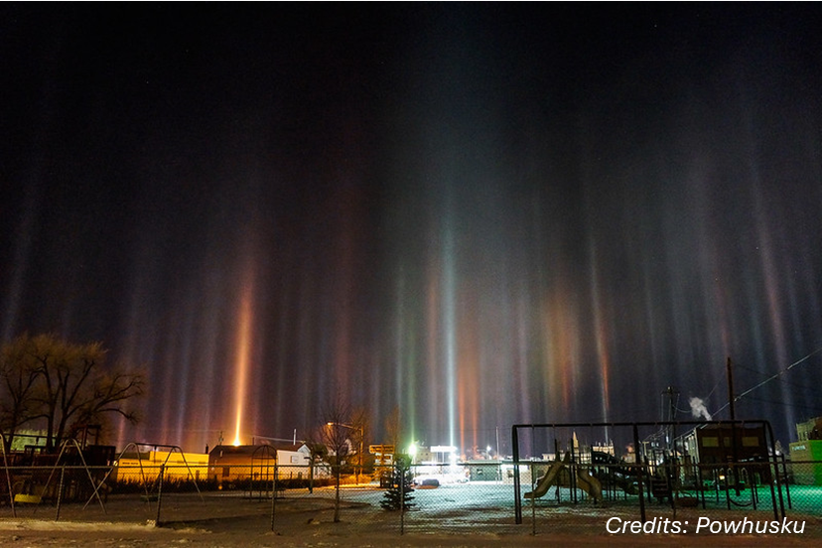
And then there are... tomatoes!? The second strongest geomagnetic storm so far this solar cycle took place on 5 November 2023. Despite being faint at mid- to low-latitudes, deep red aurora were observed and photographed from Belgium and locations as far south as Arizona and Texas in the USA, and Portugal and Italy in Europe (see the STCE newsitem). Only, in Belgium, not all of the reported aurora were factual aurora. Indeed, the celestial spectacle unfolding over Tournai and Mouscron turned out to be the glow from a nearby tomato greenhouse. The luminous pink hue, a result of the blue-red spectrum of LED lights used for tomato cultivation ("light-therapy"), painted the night sky, leading to considerable confusion amongst observers. The tomato greenhouse company clarified that the pink sky was the result of an oversight in closing the greenhouse roof's shutter. The usual screens that prevent the light from leaking outside at night were not activated, causing the Tournai sky to glow. The company issued an apology for the oversight and clarified that the bright red or pink lights in the sky were unrelated to the aurora. By that time though, the mistake had already gone international (BNN Hong Kong). This kind of confusion apparently happens quite often, with other reports e.g. early February 2022 (yes, the storms that crippled the Starlink satellites) in the Netherlands (Hortidaily), and also in December 2016 over the Waasland, Belgium (HLN).
